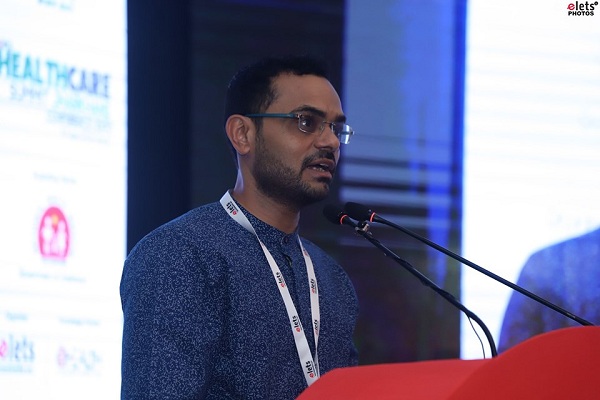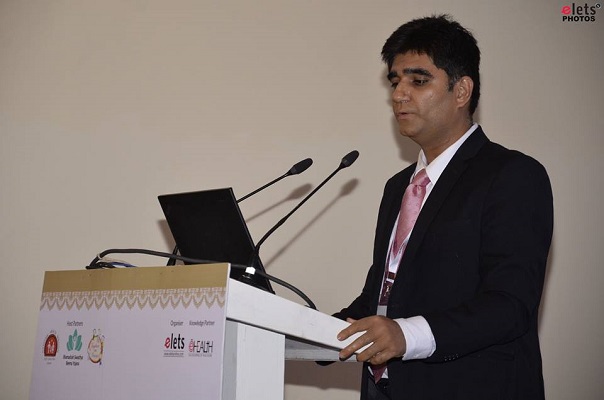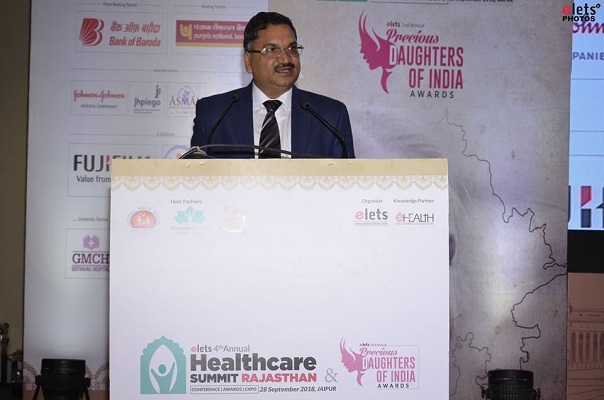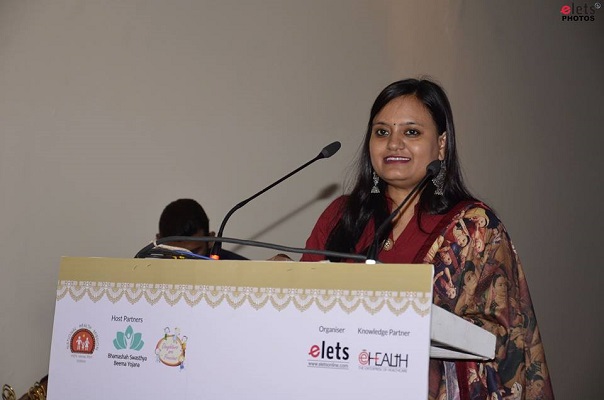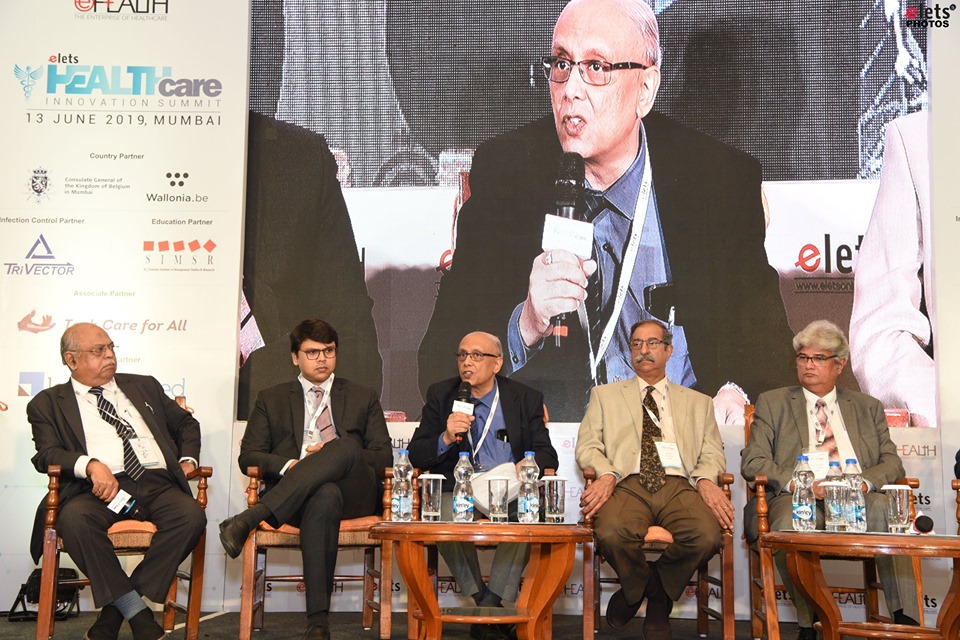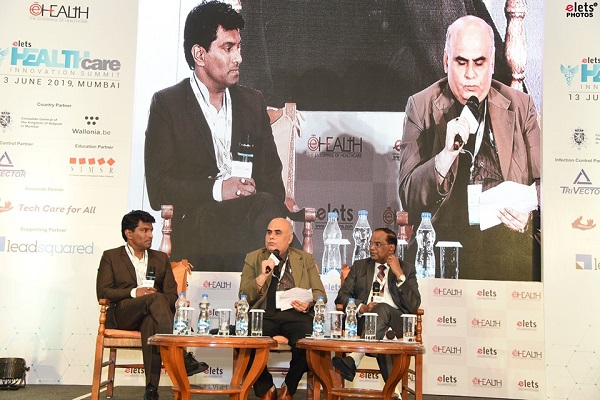
As people are becoming more informed and empowered due to vast swathes of data on various platforms, role of technology holds a huge significance. As an enabler, the modern-day technologies are proving to be boon in enhancing delivery of services on every fronts including diagnosis, rural healthcare delivery like telemedicine, and in radiology.
Having said that, it has limitations as well in terms of skyrocketing price of diagnostic equipment, availability of trained staff, inhibition in adoptions, and misuse of data.

Exploring different facets of technology and its contribution in delivery of healthcare services, experts congregated at the Healthcare Innovation Summit, organised recently by Elets Technomedia in Mumbai.
Starting the panel discussion on ‘Role of Emerging Technologies and Health Information Security in Hospitals’, Joy Chakraborty, Chief Operating Officer, PD Hinduja Hospital, Mumbai, said, “In one hand we have challenge of demand and supply and other hand cost-related concerns. With the advent of Ayushman Bharat and other State schemes, the healthcare delivery is not only becoming very competitive but price sensitive as well. Patients’ expectations are also changing due to vast swathes of information available today. Technology also makes us prone for data leak.”

Speaking during the occasion, Dr Shreekant Sapatnekar, Director, Lilavati Hospital, said, “India has currently 560 million internet subscribers, 340 million smart phone users, and 8.46 billion medical devices market. Disruptive technologies including artificial Intelligence, cloud computing, smart wearable, and telemedicine are proving to be a major game-changer.”
“Patient engagement becomes most important part because of patients’ empowerment. We have adopted technologies in radiology segment like PACS system,” he further stated.
“Everyday lots of data are getting leaked. It’s a major pain point. In western countries lots of precautionary measures are being taken in terms of regulation and compliance to prevent data leak. India lacks both awareness and initiatives on this front,” Chakraborty said.
Shedding light on what kind of challenges, Bhaktivedanta Hospital & Research Institute faces, its Projects & Program Director Dr K Venkatramanan said,“Before adapting a new technology, the main factor we try to focus on is whether the technology would bring us close to patients or not. Before selecting any new technology for our hospitals, we want to know about awareness, accessibility, adaptability, affordability and accountability. Biggest challenges we face are interoperability, physicians’ adaptation, and training. In addition, cost effectiveness between cost of the new technology as well as return of investment is another big issue.”
Terming data leak a major threat, he said, “Healthcare information is security proof to some extent but danger always remains. Technology brings close to the patients but threat underlies. Information is like assets that needs to be protected and that is why various kinds of regulations have been introduced to protect various threats to ensure business continuity. It has been found that 54 percent of data leak is from TPA side. They may not be leaking it intentionally but it may happen because there is no proper security in place.”
Talking about major technological initiatives taken by Rainbow Children’s Hospital, its Vice President & Cluster Head Neeraj Lal said, “We have patient centric technologies in our hospitals. Around 400 patients mostly children visit in our OPDs. We have created a magic floor, a virtual playground where children could play while waiting for their turns for consultation with doctors. Usually most of the hospitals do have nurse call bell system but we have replaced it with service call bell system. We have provided four button options to patients so that they can easily make a call to nurse, housekeeping and other staff in case of any such requirements.”
Whining about the Indian Healthcare industry has yet not explored potential of technology to its fullest, he said, “Less than 10 percent of Indian hospitals are actually exploiting technology. Care providers still believe in human touch. Most of the doctors give prescription in prescription pad. No OPD prescription is being tracked by the hospital. Despite many advantages of EMR, very few hospitals use the tool.”
“Though many hospitals claim that they have 100 percent EMR, it has yet to be leveraged in hospitals. Even doctors have reservation and resistance for EMR,” Chakraborty added.
Highlighting new innovative initiatives to control infection in hospitals, Dilip Patil, Founder Director, Trivector Group & Baby Quest Cryobank, said,
“Modern medicine including infection control require four Ps-predictive, preventive, personalised, and participatory technology. There should be reliable and rapid diagnostics with news technology, point of care testing, quickness in detection and isolation of disease and containment. Infection control technology should be sustainable, scalable, and economical.”
“On front of innovations, we have air filtration system to mitigate air borne transmission through microbes. It is quickest and green technology to eliminate pathogen in the air. We also monitor real time bio burner in the room where technology is being used. It enables providers to check what sort of bio-burdens are there. We are also working on sensors which will detect in real time the type of pathogen present in any particular section of the hospital,” he further stated.
Be a part of Elets Collaborative Initiatives. Join Us for Upcoming Events and explore business opportunities. Like us on Facebook , connect with us on LinkedIn and follow us on Twitter , Instagram.


